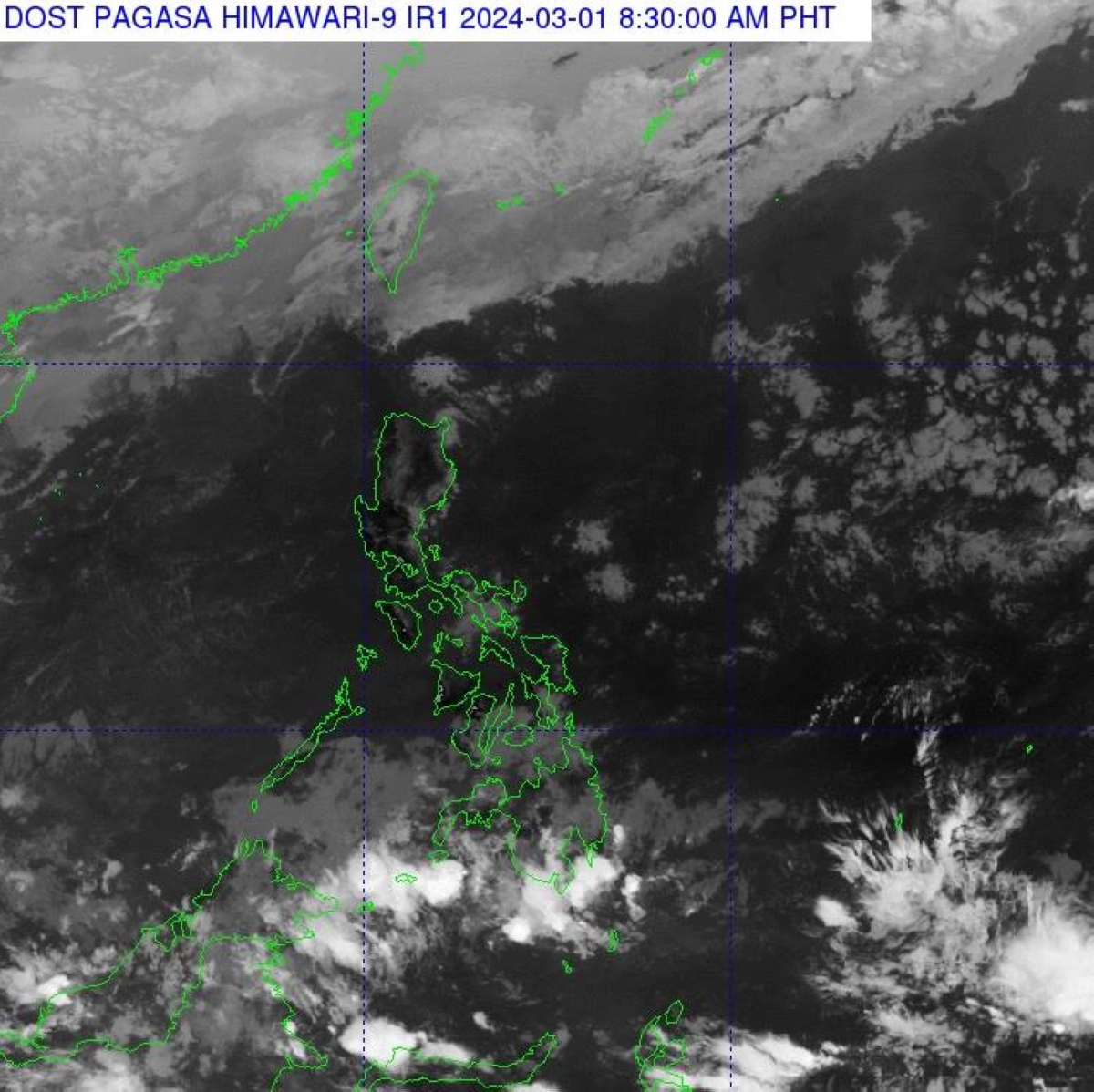The Philippine Atmospheric Geophysical and Astronomical Services Administration (Pagasa) announced on Friday that the first storm of the year is expected to enter the Philippine Area of Responsibility (PAR) in March. Named “Aghon,” this storm marks the beginning of the country’s typhoon season.
According to Pagasa weather specialist Benison Estareja, the northeast monsoon, locally known as “amihan,” will bring light rains to Northern Luzon. On the other hand, the easterlies, a wind pattern from the east, will affect the rest of the country.
Pagasa’s 5 a.m. advisory states that the amihan will primarily impact the Ilocos Region, Cordillera Administrative Region, Cagayan, Isabela, and Aurora. These areas can expect partly cloudy to overcast skies. Meanwhile, Metro Manila and the rest of the country will likely experience isolated rain showers or thunderstorms due to the easterlies and localized thunderstorms.
The arrival of the first storm and the transition from the northeast monsoon to the easterlies mark significant shifts in the country’s weather patterns. Understanding these terms and their implications is important for residents and visitors alike.
The northeast monsoon, or amihan, is a seasonal wind pattern that typically occurs from October to March. It brings cool, dry air from the northeast, originating from Siberia and Mongolia. As it passes over the Pacific Ocean, it gathers moisture, resulting in light to moderate rains in Northern Luzon. This wind pattern is known for its ability to lower temperatures and provide relief from the heat.
On the other hand, the easterlies are prevailing winds that blow from the east. They are common in tropical regions and are responsible for the warm and humid weather experienced in many parts of the Philippines. The easterlies bring moisture from the Pacific Ocean, which can lead to the formation of rain showers and thunderstorms. These weather systems are often localized and can occur in different parts of the country simultaneously.
It is important to note that the weather can be unpredictable, and conditions may vary from one location to another. Localized thunderstorms, for example, can bring heavy rainfall and strong winds in specific areas, while other regions may experience only isolated showers. Staying updated with the latest weather advisories from Pagasa and local authorities is crucial for preparedness and safety.
As the first storm of the year approaches, it serves as a reminder for everyone to review their disaster preparedness plans. This includes securing loose objects, checking emergency kits, and staying informed about evacuation procedures in case of severe weather conditions. Local communities and government agencies play a vital role in ensuring the safety and well-being of residents during these times.
In conclusion, Pagasa’s announcement of the first storm “Aghon” entering the Philippine Area of Responsibility in March signifies the start of the country’s typhoon season. The transition from the northeast monsoon to the easterlies brings changes in weather patterns, with Northern Luzon experiencing light rains and the rest of the country facing isolated rain showers or thunderstorms. Understanding these weather phenomena and staying informed through official advisories are essential for preparedness and safety.







